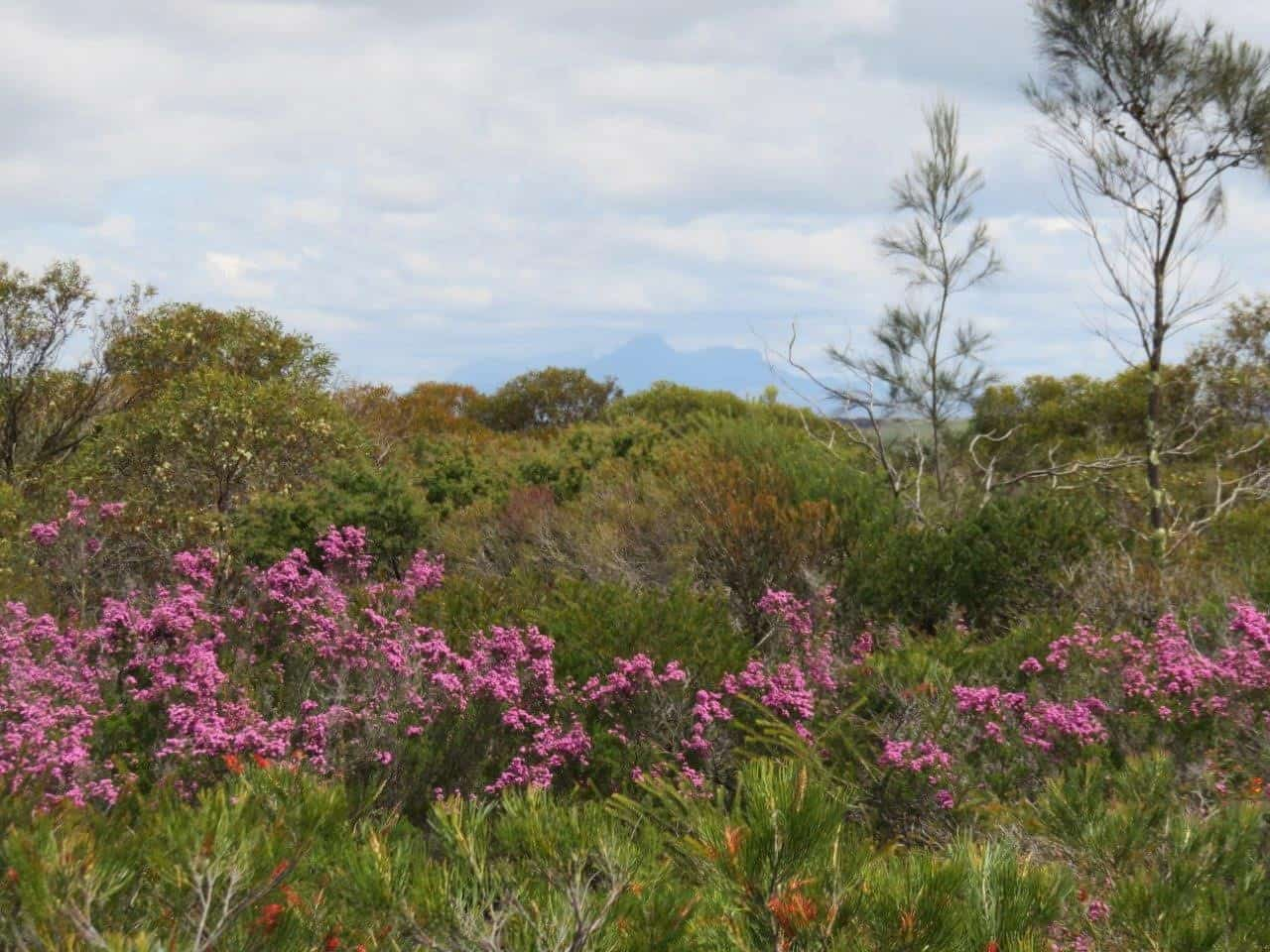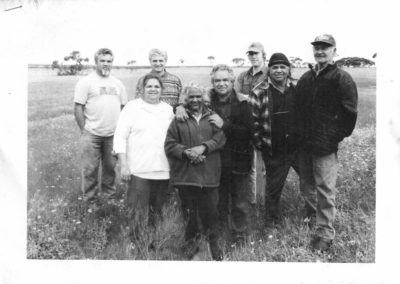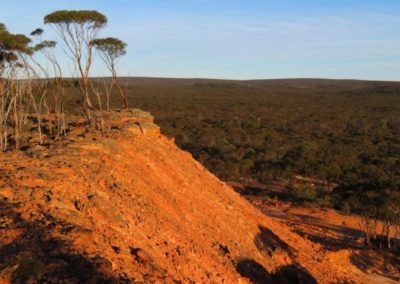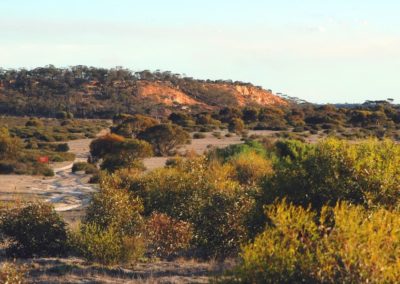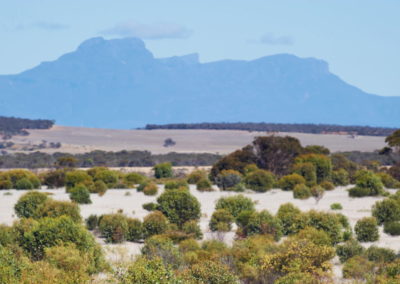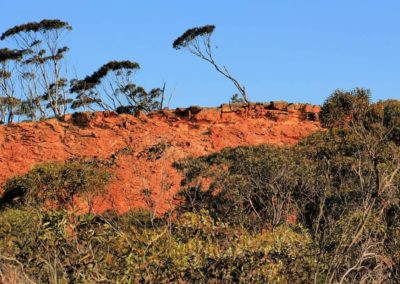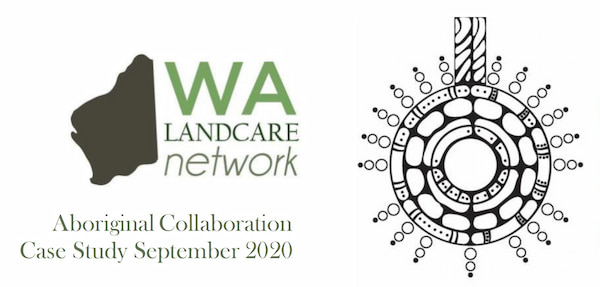Overview
Nowanup is a special place, and a centrepiece property that has demonstrated how community fabric, Noongar culture and ecological restoration can all benefit from work in the Gondwana Link, it was purchased for Greening Australia with donor funds in 2004 primarily for its ecological values. Now it is a centre used by the Noongar community and their colleagues for healing country and healing people.
Like the other privately-owned properties in the Fitz-Stirling area, Nowanup is not set up to accept independent visitors. While this could change in the future, currently you will need to join a tour or take part in an event to visit. Keep in touch with the Friends of Nowanup here.
Yet, the story of Nowanup is so inspiring that we urge you to take the time to learn more about it here.
Even without entering the property, it is worth the 3km detour up Norman’s Rd to the boundary of Nowanup. From the road you can see the spectacular red cliffs which was formed under the Eocene seas some 40-45 million years ago.

Image: Nicole Hodgson
These spongolite cliffs crumble easily, and can be dangerous, so please resist the temptation to walk on the red cliff. Instead, marvel at the fact that the top of those cliffs is what remains of the ancient Eocene sea-bed, which only resisted erosion because of the hard crust left on top. They are remnants of a seabed that was, over 40 million years ago, right across the area. The lower-lying land – the area between the cliffs and mesas has had its covering layer eroded away by water and wind over many millions of years.
Just south of the main red cliff is a small rise with red clay soils. This is an outcrop of the underlying granite and gneiss rocks, one of the areas where the sedimentary layer has been eroded away.
This broader area is known as “nyunknaiwanup” which translates to “the place where (up) the mother mallee fowl (nyunk-now) has her nest in the ground (aner)”. From this the property name “Nowanup” is derived and translates to “the place where the mallee hen has her nest”. It also has the wadjela (white fella) connotation of “the place (up) of the present (now)”.
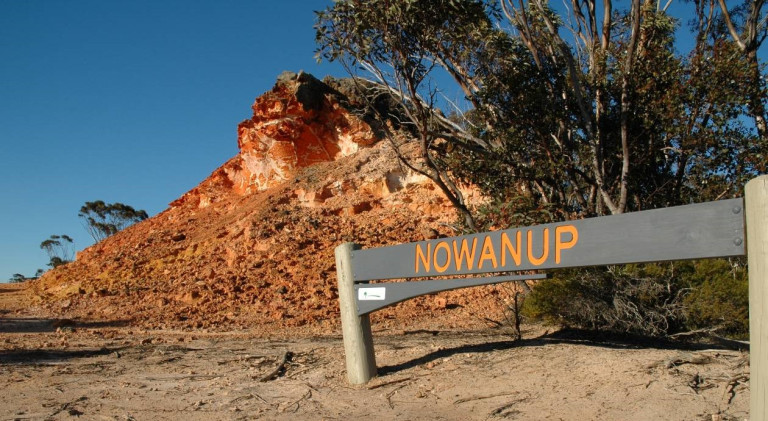
Image: Amanda Keesing
The property was allocated for agricultural use in the late 1960s, and just half of Nowanup’s 750ha were cleared for agriculture since then. The cleared land has now been replanted, with much experimentation in revegetation and restoration techniques.
Under the stewardship of Goreng Noongar elder Eugene Eades, Nowanup now receives around 1000 thousand visitors a year – through camps, cultural programs, youth at risk programs, eco-art programs and Curtin University’s Bush University. This program has been underway since 2006.
Story of the place
Watch
Nowanup: Healing Land, Healing People
Credit: Gondwana Link
Healing Country on the Gondwana Link
Credit: Greening Australia
Listen
Read
Noongar Boodja
Many Noongar elders knew this area well before it was cleared for farming and they spoke of its cultural significance.
Archaeological investigations found numerous scatters of stone artefacts, mostly along creek lines, as well as on the small mesa in the centre of the property and other escarpments. Nowanup would once have contained an abundance of natural resources for Noongar people, such as silcrete, ochre, food plants, and bird and reptile nests. The way the stone artefacts are scattered suggests that people once camped and foraged on the creek-lines and collected mineral resources on the rises and mesas.
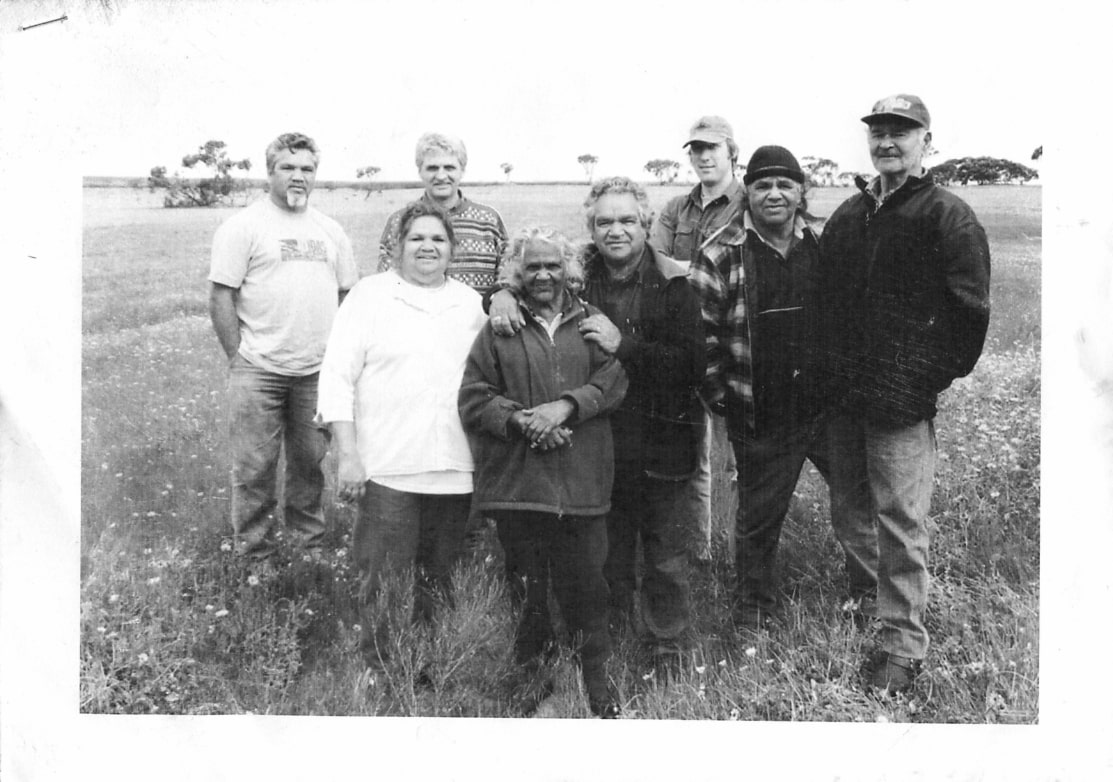
The Noongar community have been involved in Nowanup’s restoration from the beginning. One of the first things that happened in the purchasing process was a group of Noongar elders were invited to visit the property. From that they developed a plan to use the property as a centre for Noongar culture and healing. The response was ‘You beauty, go for it!’
Cleared for agriculture
Nowanup was allocated for agriculture in 1967 as part of the Conditional Purchase scheme, when a large number of blocks in the area were allocated. Nowanup was previously owned by a single family who predominantly ran sheep and brought up six kids in the small cottage. The fine clay soils meant that Nowanup was probably not suitable for widespread cropping.
The northeast part of the property was never cleared for agriculture (about 340ha) and other parts of the property (about 350ha) were cleared but never properly farmed. Most of the cleared land at the bottom of the property has now been revegetated.
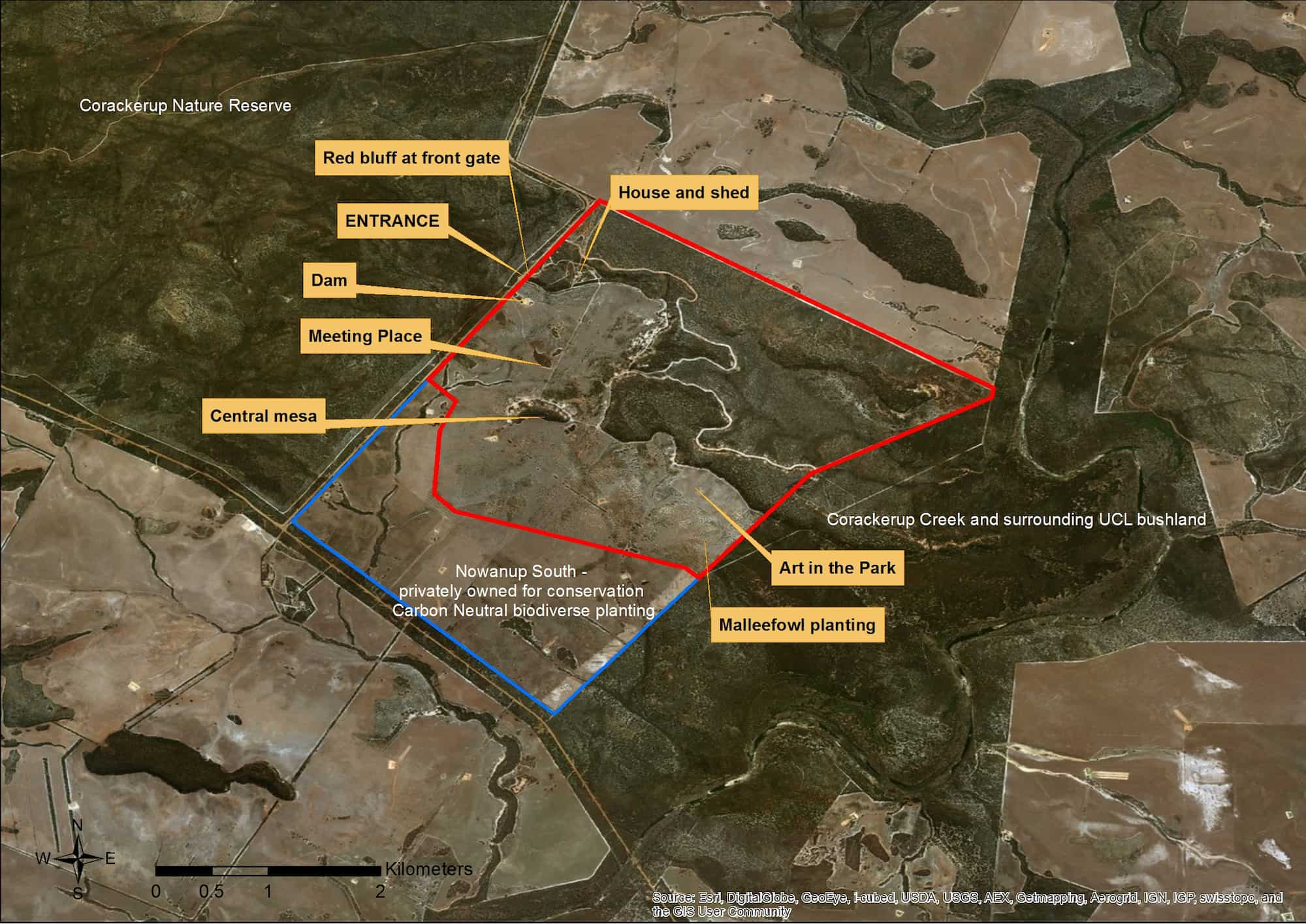
Deep time history
Nowanup is a visually compelling place, with rising breakaway mesas, broad sweeping plains, and views south down the Corackerup valley and south west to the Stirling Range.

Image: Basil Schur
The many dramatic cliffs and mesas on Nowanup are all the weathered remains of extensive spongolite deposits – the soft, easily eroded rock that was formed by sediments of marine sponges when the shallow Eocene sea covered this area around 43 million years ago.
The other geological system found here are some small areas of granite – part of the extreme southern edge of the Yilgarn block, the granite system that dominates south-western Australia.
Plantlife
The vegetation systems on Nowanup are dominated by mallee shrublands, mallet and moort woodlands and banksia heathlands.
There are amazing moort thickets, which continue into the adjacent Corackerup Creek reserve, including the locally endemic Corackerup Moort (Eucalyptus vesiculosa).
The Corackerup moort is a beautiful small tree with pendulous brick-red flowers. It was was only noticed in the mid-1990s and scientifically described and named in 2002.
It is extremely localised in its natural distribution, known only from the Corackerup area.
Nowanup already had some of the remaining populations, and with all the extra plantings undertaken it now has the world’s largest known population.
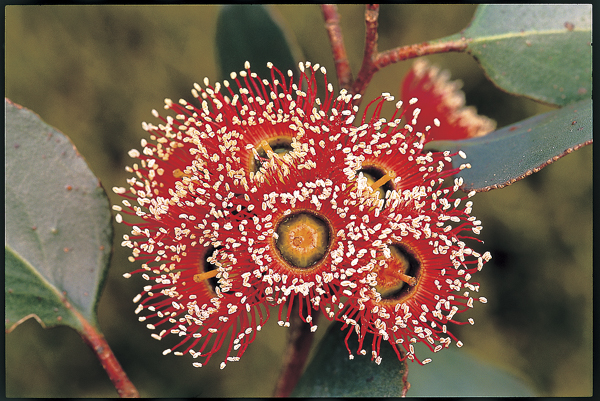
Corackerup moort
Image: Jiri Lochman
Moort is Noongar for ‘family, mob or together’ presumably for the way these trees grow in fairly pure, dense stands of a similar age. Given the importance of Nowanup to the Noongar community, it is fitting that the moort is such a prevalent species here.
Ecological restoration
Ecological restoration is an ever-evolving practice, and many different restoration techniques have been trialled at Nowanup.
Some of the techniques used here include:
- Brush mulching of mallee and moort
- Direct seeding (with an experimental direct seeding machine created from a repurposed plough or a niche seeder)
- Direct planting of seedlings
- Variation in soil preparation – ripping it first, or planting with minimum tillage
Early revegetation efforts at Nowanup did not always achieve good germination of a number of species on the difficult clay soils, and so many areas are dominated by a few species of eucalypts and acacias. These were later enriched by in-fill plantings which also demonstrate an improvement in the standard of restoration work over time.
Cultural plantings
The most recent restoration is the cultural plantings – where a cultural integrative design and establishment process has incorporated a culturally significant healing story to make a lasting contribution to the Nowanup revegetation story.
There are two plantings – the giant, 200m long Gnow (malleefowl) and the circles representing the 6 Noongar seasons. A group of Yorgas (women) are now working on filling in the gaps in these plantings with bush tucker plants.
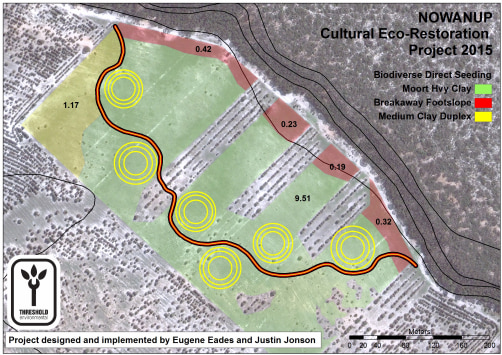
And yet, it still takes time for ecological restoration areas to mature – for the gaps between plants to fill out through natural seeding, and for emus and other birds to carry seeds in their dung.
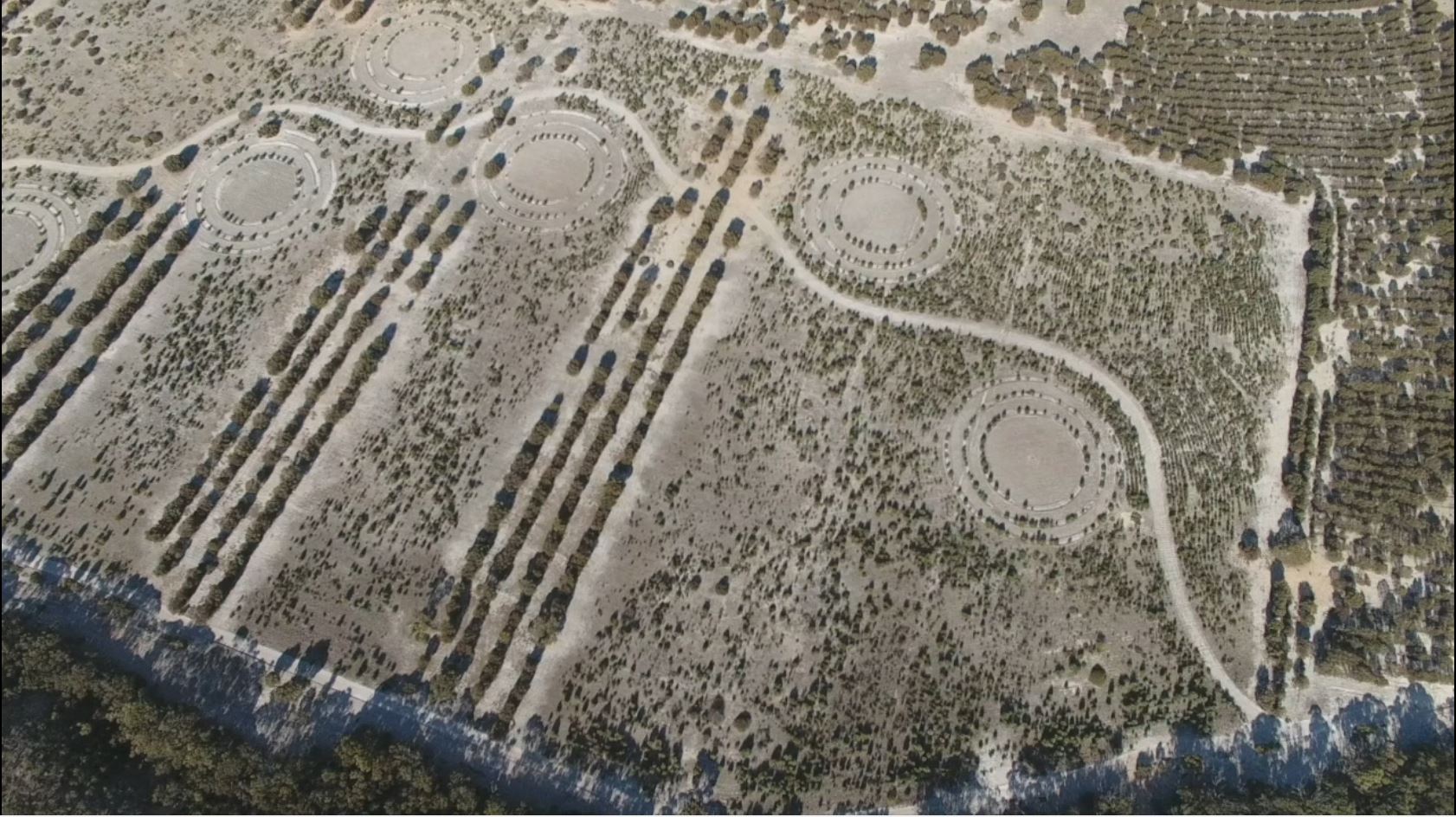
Nowanup cultural plantings in 2018
Image: Andy McGregor
Healthy Country, Healthy People
Eugene Eades has been at Nowanup since he brought a group of Elders out in 2005. Since then he has created a hugely important cultural centre for a transformational program of healing country-healing people. One of the first projects was the design and construction of a Meeting Place, which involved the contribution from young, at-risk Noongar men.
The Healing country-Healing people program has seen over 17,000 people take part – including members of the Stolen Generation, young Nyungars recommended by the courts, university groups, Wirrpanda Foundation, Department of Child Protection, school groups, corporate figures and many more.
For local Noongar elders, the benefits from Nowanup are profound:
Carol Pettersen
Menang-Ngadju Elder
“When Eugene asked me to come out to Nowanup that was an incredible feeling. When you go out there you can look at some old pictures where there was just the bare landscape and just the paddock and pasture. To see what it looks like now, it’s just incredible and in just a short time.
Everything came to life – as soon as you planted the trees you could feel the land coming to life. You could hear the birds singing, see the kangaroos and the relationship between the creatures.”
Nowanup Rangers
A small Noongar Ranger team works from Nowanup, assisting with property management and infrastructure, as well as supporting land management work throughout the region.
Projects have included weed removal at Bremer Bay, cultural mapping and erosion control on the Gairdner River, planting seedlings and collecting seed for restoration plantings.
See & Do
Visiting Nowanup
At the moment, it is not possible to visit Nowanup as an individual traveller or visitor. In the future, there may be walk trails and signage developed to manage independent visitors.
Please keep checking the Friends of Nowanup or Gondwana Link Facebook pages for more information.
Giving back and getting involved
To support the work of Nowanup – support the Friends of Nowanup, or Gondwana Link.
Nearby
There are many other sites to visit nearby including:

Norman's Road
The pullover area adjoins the now privately-owned conservation property that was initially restored by Carbon Neutral. The Corackerup Nature Reserve is over the road.
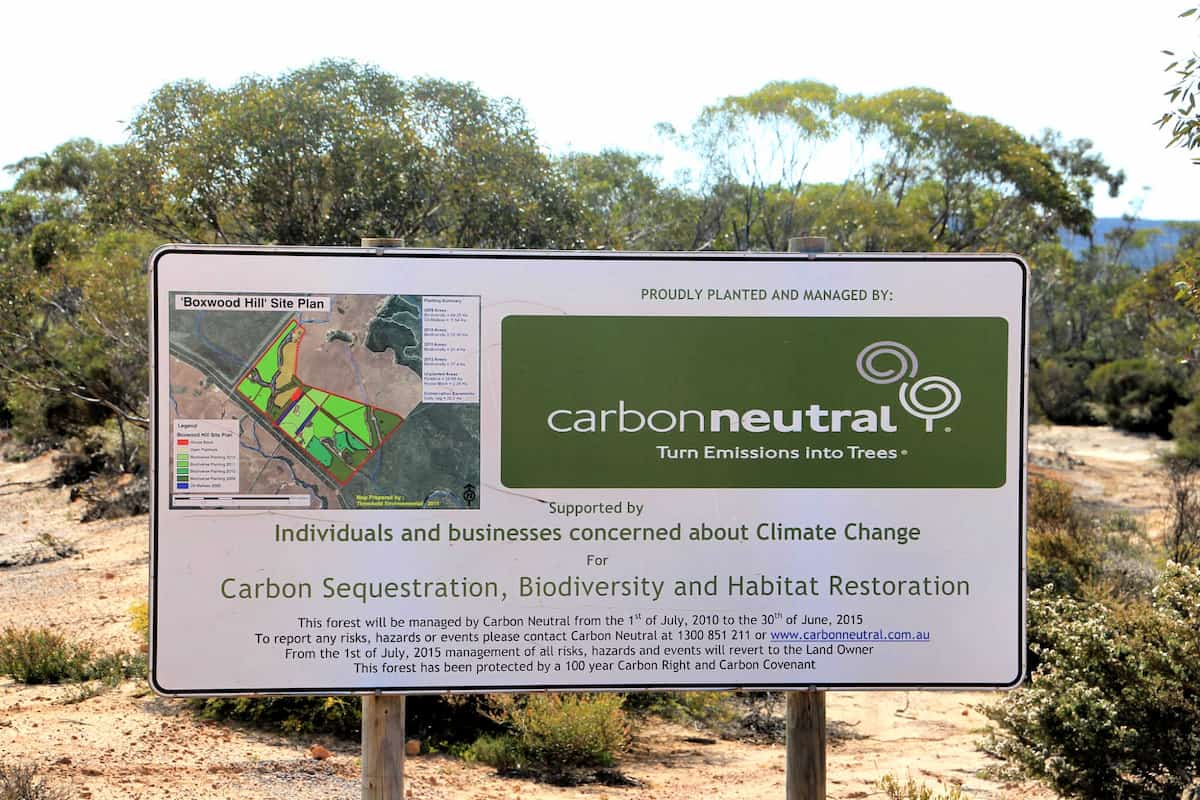
Carbon Neutral restoration site
This property was purchased and replanted for ‘Carbon sequestration, biodiversity and habitat restoration.’
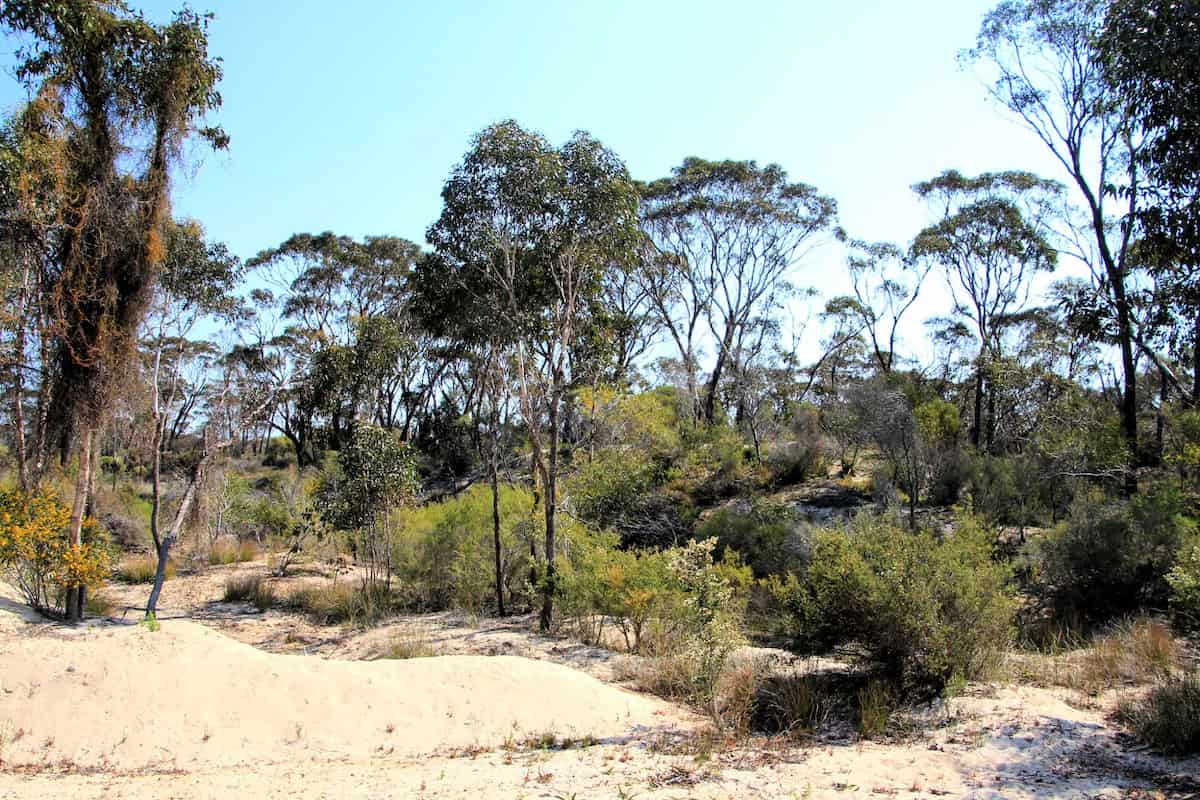
Corackerup Creek Crossing
Like nearby Chingarrup Creek, Corackerup Creek is also deeply incised into the surrounding landscape, and is part of a substantial sub-catchment of the Pallinup River.
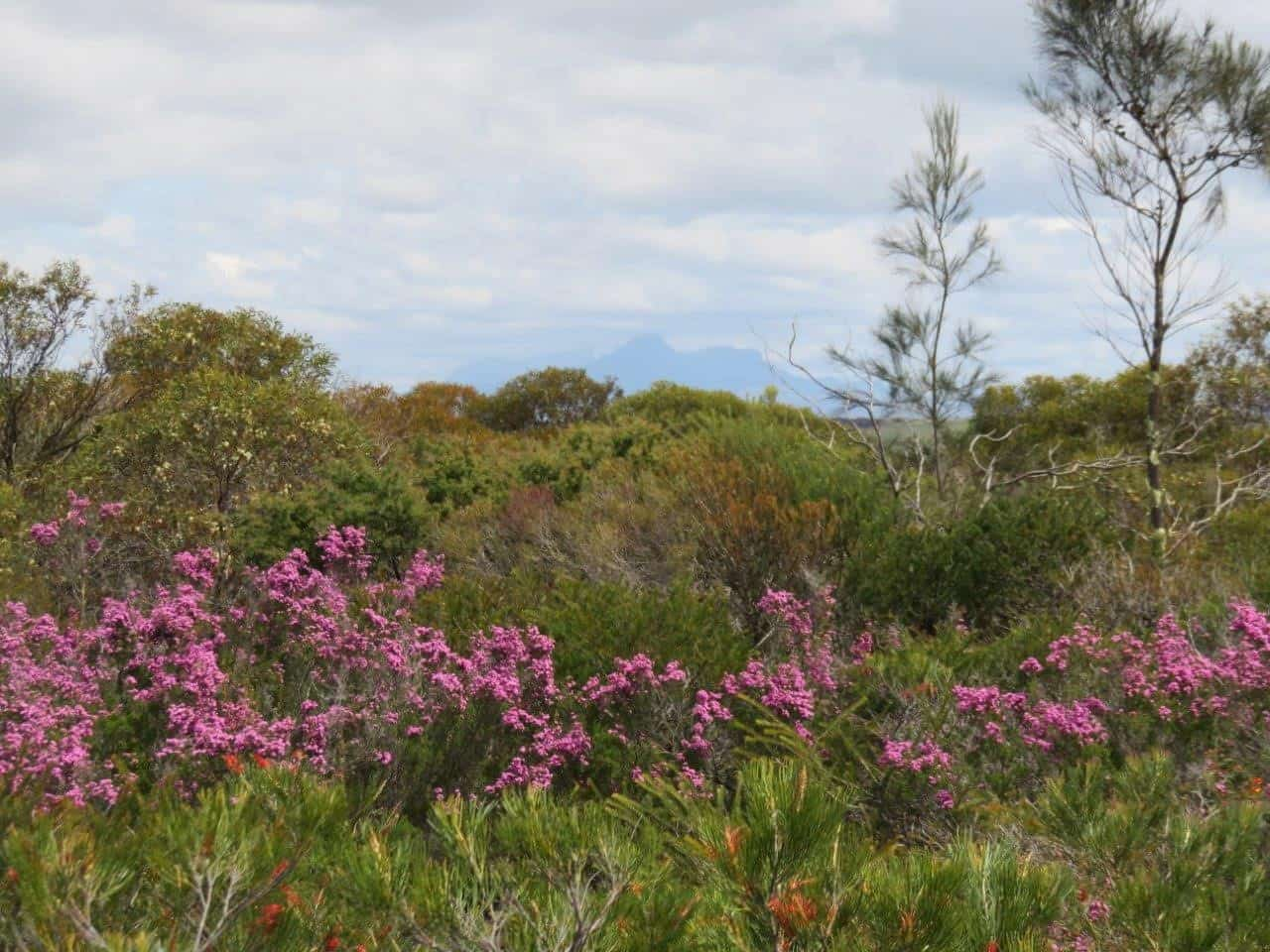
Chingarrup Sanctuary
Just to the north of Chingarrup Creek is Chingarrup Sanctuary the very first property purchased for ecological restoration as part of the Gondwana Link program, back in 2002.

Chingarrup Creek Crossing
All the brooks and creeks in this area are tributaries of the Pallinup River, the largest river system on the South Coast.
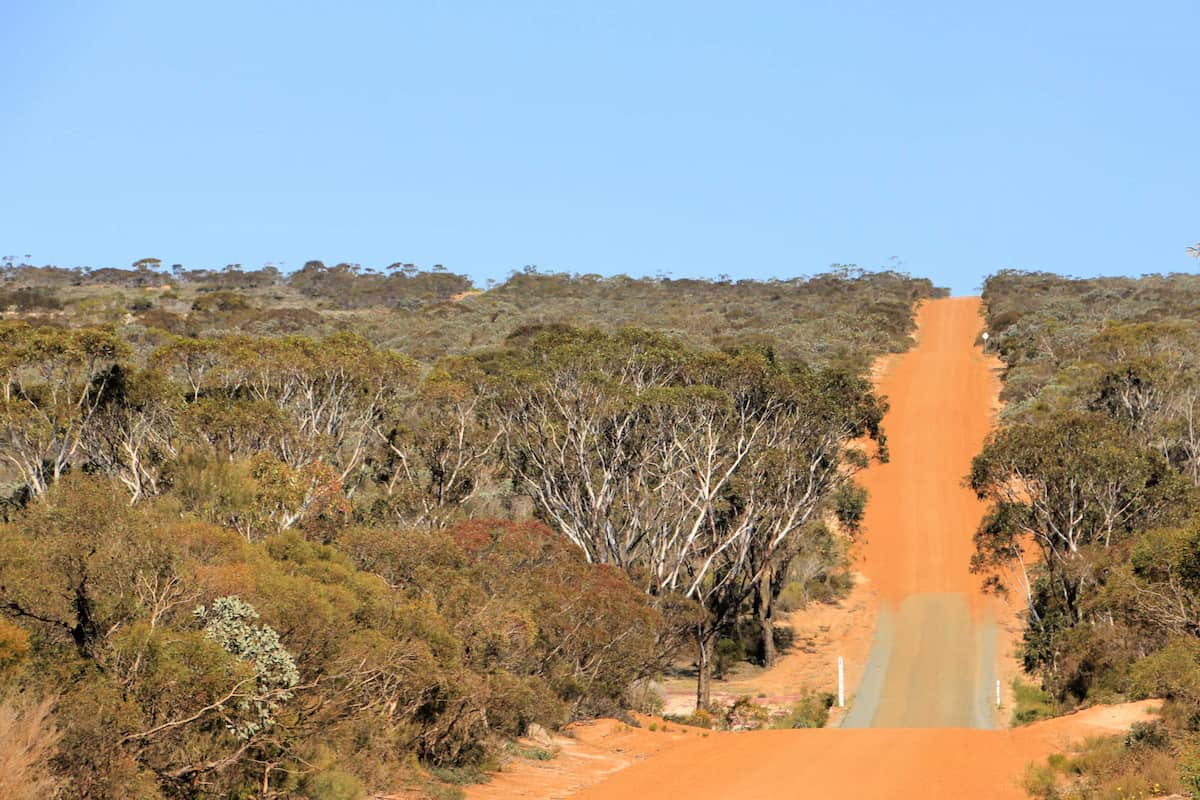
Boxwood Hill - Ongerup Road
This first stretch of road will take you into the heart of one of Australia’s most important ecological restoration areas.
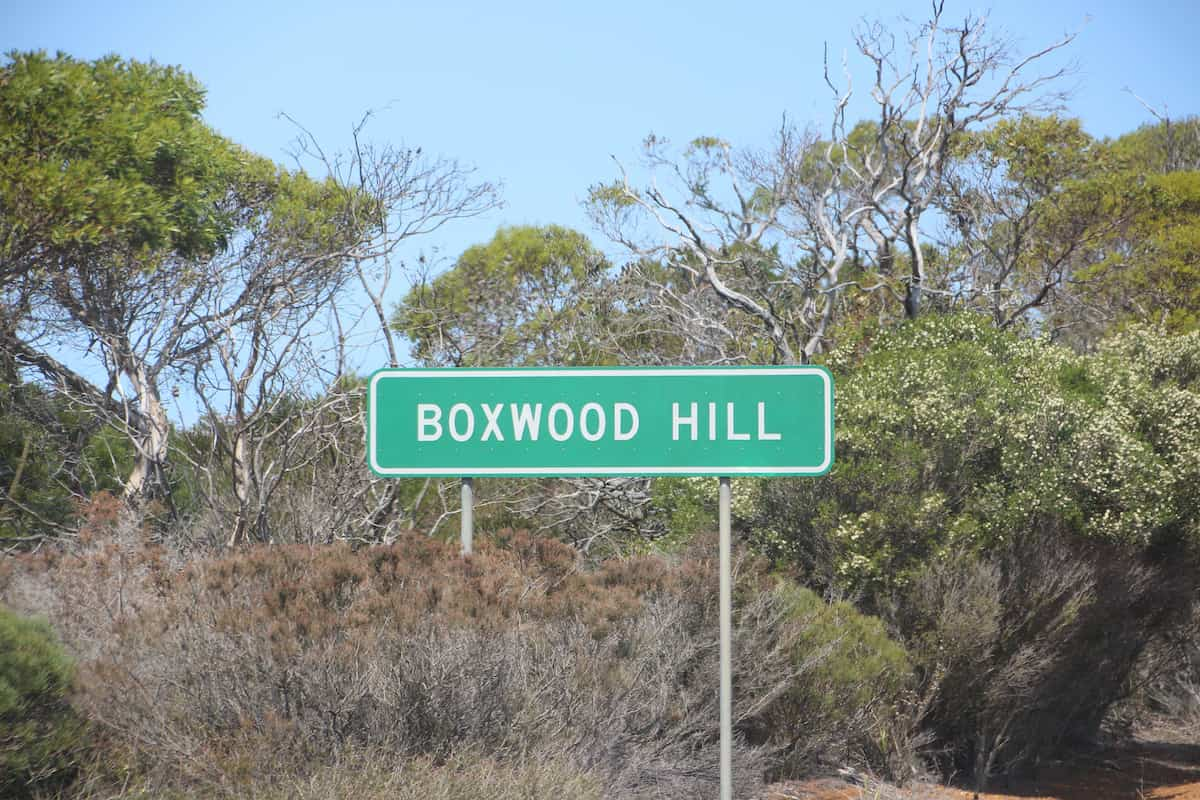
Boxwood Hill crossroad
The intersection on South Coast Highway that leads to the Fitz-Stirling area.
Practical Information
Facilities
This is a remote area and there are limited facilities available. There is a roadhouse at the Boxwood Hill intersection.
See Visitor Information from the Shire of Jerramungup for accommodation, eating and camping options in Jerramungup and Bremer Bay.

